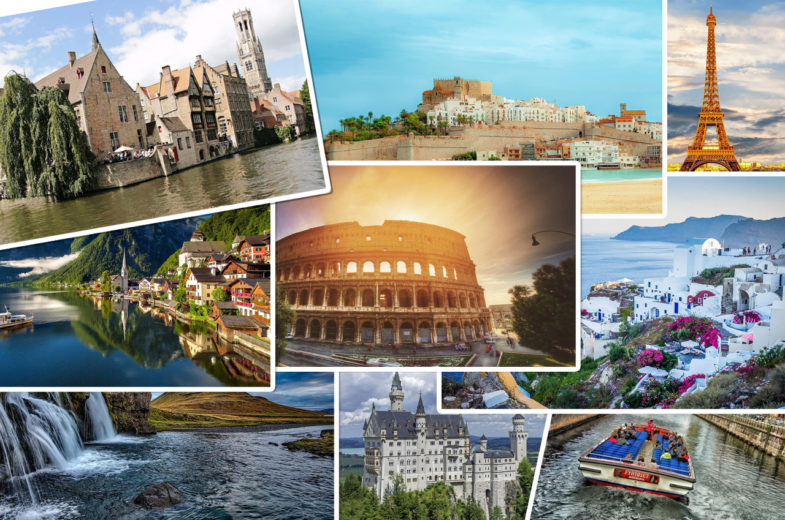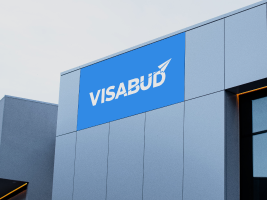Dreaming of exploring Europe? Well, for many Indians, it’s a big dream! But before you pack your bags, there’s something important you need to know for getting a Schengen visa. This special visa lets you visit 26 different countries in Europe without needing separate visas for each one. So, in this article, we’ll walk you through the process of getting a Schengen visa if you’re from India. We’ll keep things simple and clear, so you’ll be ready to start your European adventure in no time!
Why do you need a Schengen Visa?
If you’re an Indian citizen planning to visit Europe or any of the Schengen countries, you’ll need a Schengen visa. This visa grants you entry to any of the 26 countries in the Schengen area, whether you’re travelling for work, study, or leisure. However, it’s important to note that final entry decisions are made by border control authorities in each country.
To apply for a Schengen visa from India, follow these steps:
- Determine the type of visa you need for your travel purposes from India to Europe.
- Identify the embassy, consulate, or Visa Application Centre (VAC) where you must apply based on your jurisdiction.
- Apply for the Schengen visa within the appropriate timeframe. You can apply as early as three months before your planned trip but no later than 15 working days before your intended departure.
- Gather all necessary documents required for Indian citizens applying for a Schengen visa.
- Schedule an appointment online, over the phone, or in person, according to the procedures of your chosen country.
- Attend the visa interview on the scheduled date.
- Familiarize yourself with the fixed visa fee structure for Schengen countries applicable to Indian citizens. You can find this information online or inquire for details.
- Await a response on your visa application, which typically takes a maximum of 15 days.
Following these steps will help streamline your Schengen visa application process from India.
Types of Schengen Visa
There are several types of Schengen visas available for Indian nationals, each serving different purposes:
- Type A Schengen Visa: Also known as the Airport Transit Visa, this visa allows you to transit through or wait at an airport in a Schengen Area country. It’s required if you’re travelling from a non-Schengen country, like India, to another non-Schengen country but have a connecting flight through a Schengen country airport. However, it doesn’t permit entry into the country.
- Type B Schengen Visa: This is also a Transit Visa, allowing transit through multiple Schengen countries on the way to a non-Schengen country. It’s valid for up to 5 days.
- Type C Schengen Visa: The most common type is the Short Stay visa (Type C), allowing travel within the Schengen area for up to 90 days within 6 months. It comes with different features based on the purpose of your trip:
-
- Single-entry visa: Schengen area entry only.
-
- Double-entry visa: Permits two entries within the 6-month visa validity.
-
- Multiple-entry visa: Enables multiple entries and exits within the 6-month validity for stays of up to 90 days each time.
- Type D Schengen Visa: Also known as the long-stay or national visa, it’s required for those intending to study, work, or live in a Schengen country. Depending on your purpose, it can be:
-
- Single-entry visa: For those not planning to stay in the Schengen country after a specific period.
-
- Multi-entry visa: For those requiring repeated entries into the Schengen country.
You can apply for a Type D visa for various reasons, including tourism, business, study, or personal matters. Each Schengen country issues Type D visas based on its national legislation. Be sure to contact the relevant national visa service centers for detailed information on conditions and requirements.
Time Required for Schengen Visa Processing
Processing a Schengen visa in India typically takes some time, so it’s wise to initiate the application process several weeks before your planned travel date. After submitting your application, you can expect to wait approximately 15 days to receive a decision on whether your visa has been approved or rejected. In rare cases, this processing time may extend up to 45 days. Therefore, it’s important to plan and allow for sufficient time for the visa processing.
When applying for your Schengen visa, it’s crucial to ensure you provide the correct documents, including a comprehensive travel itinerary. The Schengen visa itinerary serves as essential evidence for authorities, detailing your travel plans and intentions for the trip. Let’s delve into crafting the perfect itinerary for your Schengen visa application:
Documents for Confirming Your Flight Itinerary
While the itinerary itself is crucial, it’s essential to support it with the right documents.
Here’s what you’ll need to verify your itinerary:
-
Proof of Accommodation:
- Hotel reservations are the most common proof.
- Rental agreements or invitation letters from friends/family can also suffice.
- Sponsorship letters if you’re being sponsored for accommodation.
-
Proof of Travel:
- Confirmed flight tickets are ideal but can be costly.
- Dummy tickets act as placeholders for flight tickets and can be used if your visa is denied.
- Flight reservations from airlines or travel agencies.
-
Proof of Funds:
- Bank statements for the last six months demonstrate sufficient funds.
- Sponsorship letters or employment letters stating salary and financial capabilities can also suffice.
Tips for Crafting Your Itinerary:
- Ensure all details in your itinerary align with your travel plans.
- Double-check flight and accommodation reservations for accuracy.
- Keep copies of all documents for your records.
- Be prepared to provide additional documents if requested by authorities.
Crafting a thorough and accurate Schengen visa itinerary, supported by the right documents, significantly enhances your application’s chances of approval. It’s a crucial step towards making your European travel dreams a reality.
When applying for your Schengen visa, assembling the correct documents is crucial, and among them, the travel itinerary holds significant importance. Let’s explore how to create the perfect itinerary for your Schengen visa application.
What Is a Schengen Visa Itinerary?
The Schengen visa itinerary is a document that outlines your travel plans and intentions for your trip. It provides authorities with details such as:
- Countries you plan to visit.
- Arrival and departure dates.
- Accommodation details.
- Flight bookings.
- Airport information.
- Contact numbers.
Documents to Confirm Your Flight Itinerary
While the itinerary itself is essential, supporting documents are necessary for verification. Here’s what you’ll need:
Proof of Accommodation:
- Hotel reservations are common.
- Rental agreements or invitation letters can suffice.
- Sponsorship letters if you’re being sponsored for accommodation.
Proof of Travel:
- Confirmed flight tickets are ideal.
- Dummy tickets act as placeholders.
- Flight reservations from airlines or travel agencies.
Proof of Funds:
- Bank statements for the last six months.
- Sponsorship letters or employment letters stating salary.
Example of a Schengen Visa Itinerary:
Name of Applicant: [Your full name as on passport].
Travel Dates: From [date] To [date].
Main Destination: [Primary country of visit in the Schengen area].
Purpose of Visit: [e.g., tourism].
Flight Details:
Arrival Flight:
- Flight Name: [Airline name].
- Flight Number: [Flight number].
- Airport: [Departure airport].
- Arrival Time: [Arrival time].
- Flight Date: [Date of flight].
Departure Flight:
- Flight Name: [Airline name].
- Flight Number: [Flight number].
- Airport: [Departure airport].
- Departure Time: [Departure time].
- Flight Date: [Date of flight].
Accommodation Details:
- City 1: [Hotel name and address].
- City 2: [Hotel name and address].
- City 3: [Hotel name and address].
Planned Activities:
- Day 1: [Activities planned].
- Day 2: [Activities planned].
- Day 3: [Activities planned].
- Day 4: [Activities planned].
- Day 5: [Activities planned].
- Day 6: [Activities planned].
Additional Information:
- Planned Countries to Visit: [List of countries].
Creating a detailed Schengen visa itinerary is super important for your trip to Europe. It’s not just a list of places and dates; it’s your way to show officials your travel plans and make your visa application strong. So, whether you’re dreaming of exploring Rome, Venice, or Paris, making a good itinerary is your first step to making those dreams come true. Have a great trip, and enjoy your adventure in Europe!
Looking for a Visa? Feel free to contact us!







